The Independent's journalism is supported by our readers. When you purchase through links on our site, we may earn commission.
Australia’s Northern Territory: Snap chat in the land of Crocodile Dundee
The sprawling Northern Territory offers nature like nowhere else – birdlife, waterfalls, stifling heat and, of course, huge crocs. Nick Curtis wades in
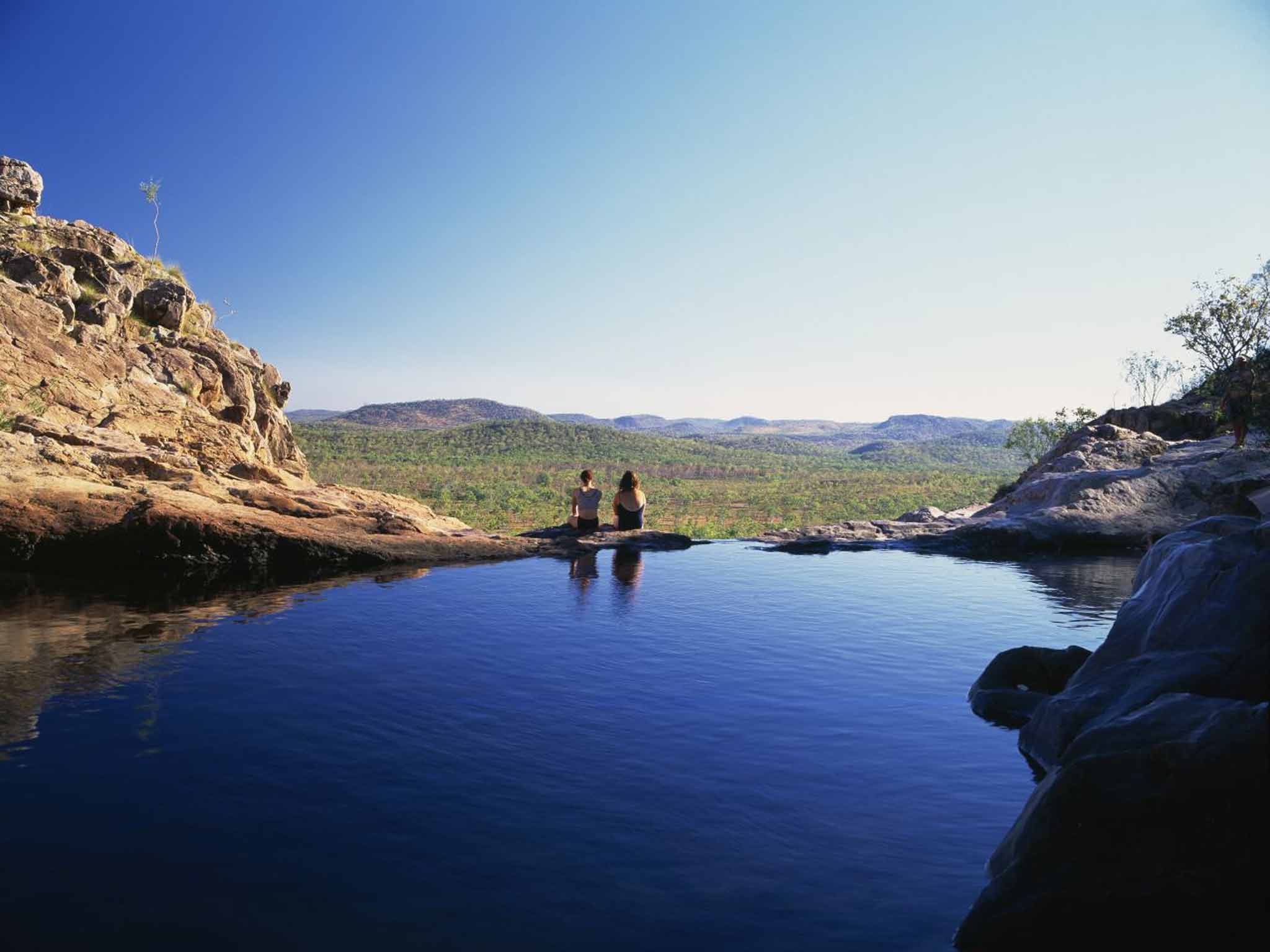
The first thing I notice about Australia's Northern Territory is that it seems to be more or less constantly on fire. Columns of smoke hang in the huge skies, and the super-straight highways are littered with the corpses of animals that fled bush fires only to be hit by Winnebagos, SUVs or thundering road trains. Originally pioneered by Aborigines, this controlled programme of burn-off is to encourage regrowth, and indicative of the tension between man and nature in this dazzlingly hostile landscape.
Fewer than 250,000 people live in this tropical swath of rock and charred forest. Its capital, Darwin, is closer to Asia than it is to Sydney. As well as fires, the unwary visitor must look out for razor-sharp shrubs, deadly spiders, biting ants, snakes and termites. Then there are the crocodiles: dainty, snout-nosed freshwater ones and the implacable, huge saltwater breed, whose yellow eyes express something more chilling than wickedness or hunger – the sheer indifference of prehistoric creatures that can live a century or more, and are far more likely to find things to eat than things that will eat them.
I was assured that a box jellyfish or rogue buffalo was more likely to be lethal than a croc, and that the punishing tropical heat (up to 37C one afternoon in Jabiru) would be the most likely cause of death for a hapless townie. But it's the reptiles that first put the Northern Territory on the map, 30 years ago this year, when Paul Hogan starred in Crocodile Dundee, the surprise screen hit about a romance between an outback bushman and a New York City girl.
Though Hogan and his original audience may now be showing signs of wear and tear, the stark charms of the Northern Territory, including many of the film's beautiful locations, are largely unchanged, as is the no-nonsense attitude of the locals. The very few that aren't friendly will tell you exactly why they hate all Poms (except, weirdly, the Royal Family). And I should perhaps mention that in the Territory's capital, Darwin, I had a punch thrown at me for the first time in 30 years.
Darwin itself is a pragmatic, architecturally blunt town with a mostly transient population serving the mining and fishing industries, ringed by gorgeous, empty beaches but with a populous wave lagoon and harbour beach protected by anti-croc defences. This is a hard-partying place where bars are boisterous, beer plentiful, steaks huge, and vegetables incidental. I fulfilled a lifetime ambition by ordering a crocodile burger in the Cornucopia café, by Darwin's excellent museum and art gallery, and asking the waitress to make it snappy.
The main attractions of Darwin are the deckchair cinema, some Second World War oil tunnels and Crocosaurus Cove, where you can meet Burt, the croc who menaced Linda Kozlowski, Hogan's love interest in the film (and in real life: they were married for 24 years). You can also get dunked into a tank alongside one of Burt's scaly cohorts in a toughened acrylic cylinder. Mainly, though, Darwin is a jumping-off point for Kakadu National Park, where much of Crocodile Dundee was shot – a hugely biodiverse area about the size of Slovenia, with a uranium mine right in the middle of it – and for the wider Territory. Hats, water, factor-50 sunblock – and ideally, a bloke with a 4x4 to ferry you around – are essentials.
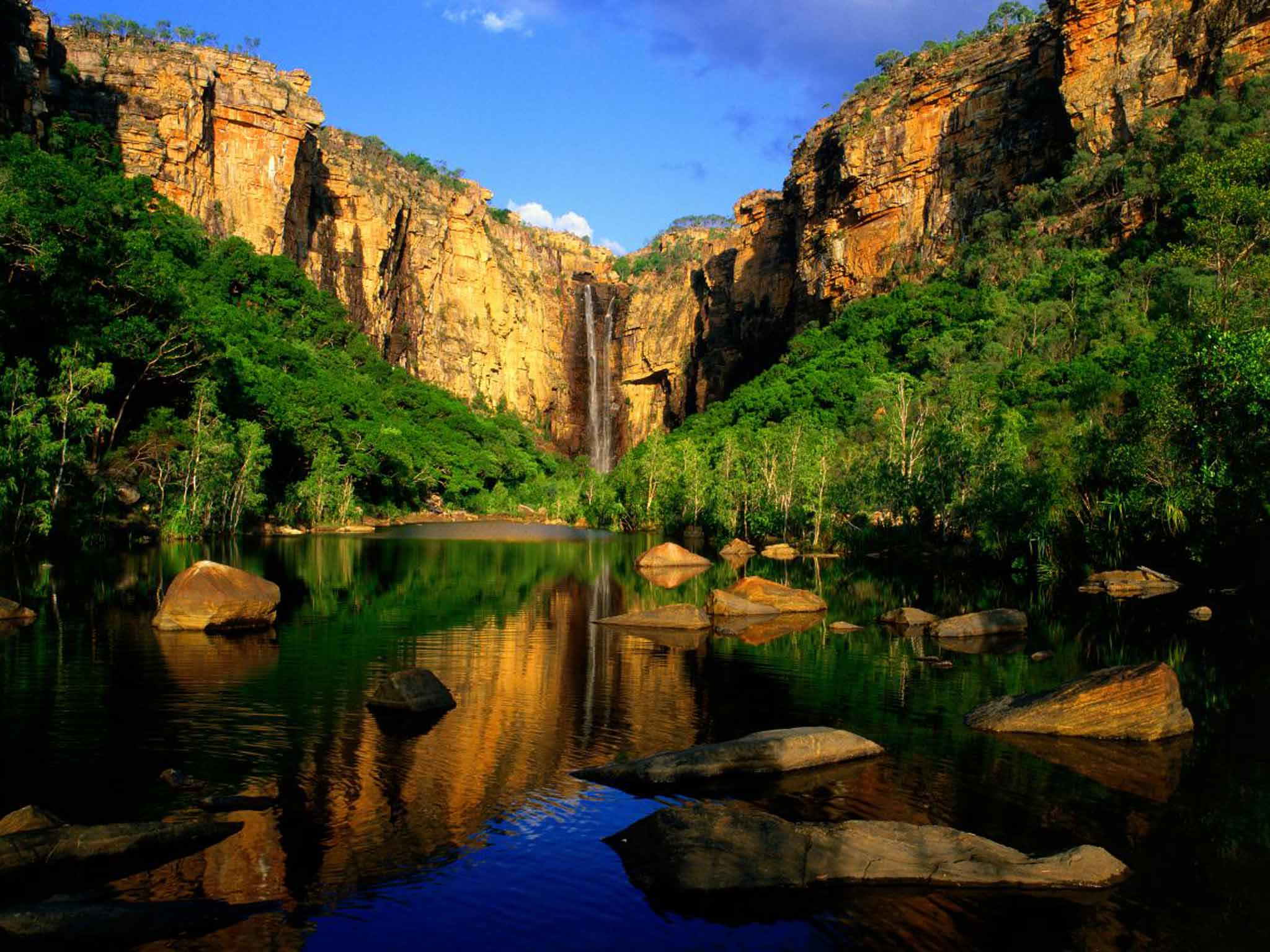
On the Stuart Highway out of town, we passed airstrips for wartime Hurricane squadrons, the roadside site where Rod Ansell – the rather less gallant real-life inspiration for Hogan's character – was killed in a shootout with police, and a station for the luxurious Ghan train. (When the historic line from Adelaide was finally extended to Darwin in 2004, locals turned out to moon the first train through. Territorians tend to refer disdainfully to other Aussies, especially those from the south and east coast cities, as “the latte set”.)
Further on is the 303 Bar in the Adelaide River Inn, in which Charlie, the buffalo tamed by Mick Dundee, now stands, stuffed and with a bemused expression on his face. A detour took us to the spooky Grove Hill hotel, an arid homestead built from old mine materials in 1935 and ringed with auto wrecks. You can see how this society inspired not only Crocodile Dundee but the Mad Max film franchise.
It's not all frontier hardship and ruin, though. There are wide-screen scrolling skies and mile upon mile of (often charred) eucalyptus and paperbark trees, and then, suddenly, an area of simply breathtaking natural gorgeousness. One day, we hiked for an hour uphill to bathe in the blood-warm waterfalls and rockpools of beautiful Edith Falls; on another, we climbed the Ubirr rocks, site of Aboriginal paintings of disputed antiquity, to watch the red sun set behind a plume of smoke a mile high, like Sauron's eye from The Lord of the Rings.
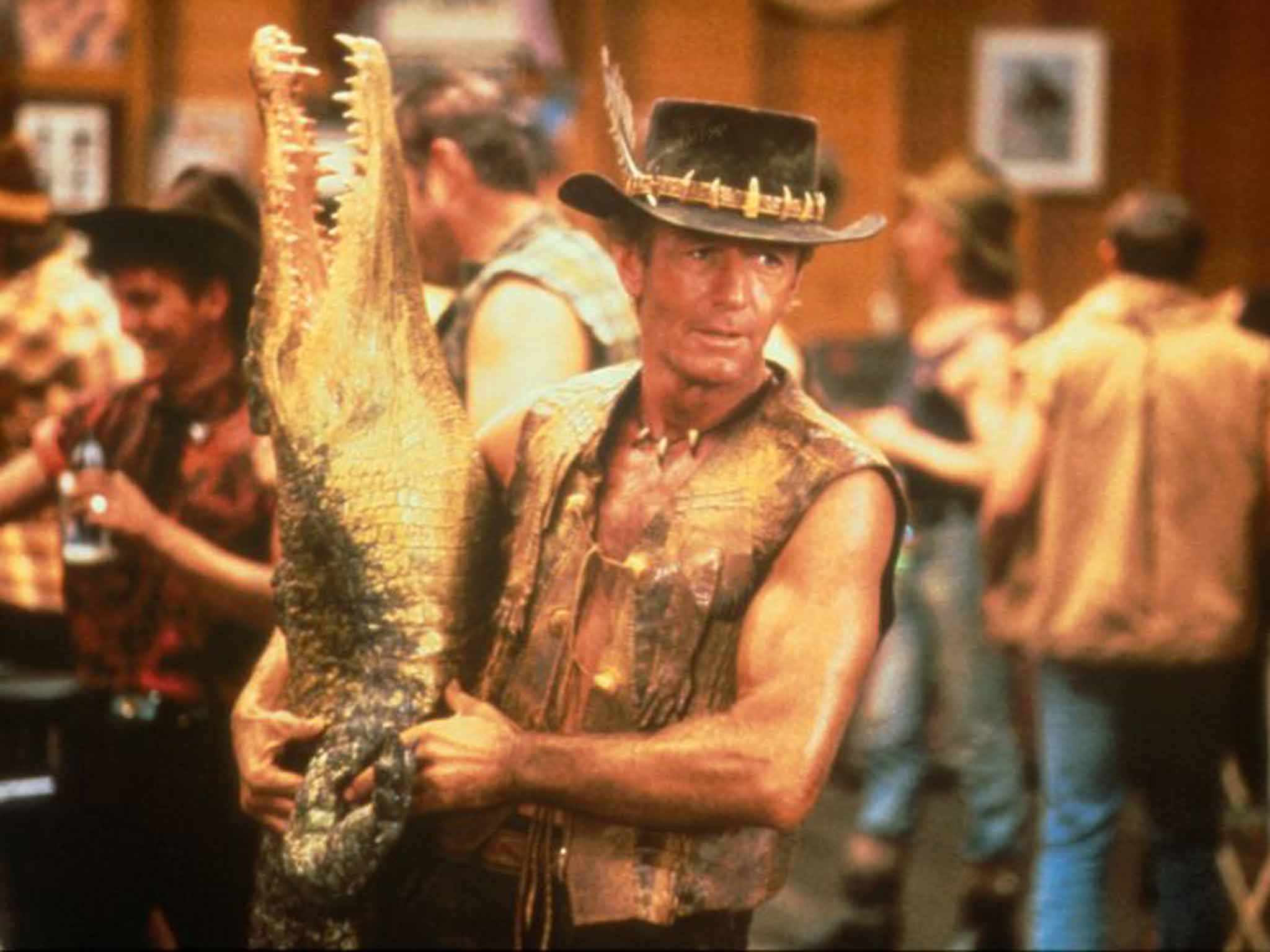
We climbed a further slope to gain panoramic views of the Nourlangie escarpment, a sort of miniature geological version of Uluru, but without the cultural and religious significance, and stalked a huge variety of birdlife at the Anbangbang billabong. Sometimes, we were thwarted. A visit to Gunlom, the idyllic cliff waterfall and pool where Hogan and Kozlowski first fall for each other was curtailed because it took so long to drive there and back. A second planned swim in a rock pool at Magook had to be cancelled because the road to it had been engulfed in fire for three days.
The distances are boggling. It's 1,500km (about 930 miles), or a 15-hour drive, from Darwin to Alice Springs, a further 450 km to Uluru (though there are internal flights). Thus lodges, campsites and roadhouses dot the Territory. They offer different levels of accommodation, from soft ground, where a hardened outback hand can bed down in a swag (halfway between a tent and a sleeping bag), to chalets for pampered types and parking spaces for Winnebagos. We met several “grey nomads”: fifty- and sixtysomethings who had taken the opportunity of early retirement, sold their houses, and spent their leisure years travelling the country in motor homes.
From the Anbinik Kakadu Resort at Jabiru – a town comprising two campsites, a hotel hilariously shaped like a crocodile, a bakery, and that's about it – we took cruises on the Yellow Water Billabong, and past a multitude of leering saurians on the geographically correct but zoologically misnamed East Alligator River, the latter led by an utterly charming man called Tyrone whose grandfather, he proudly told us, appeared in Crocodile Dundee.
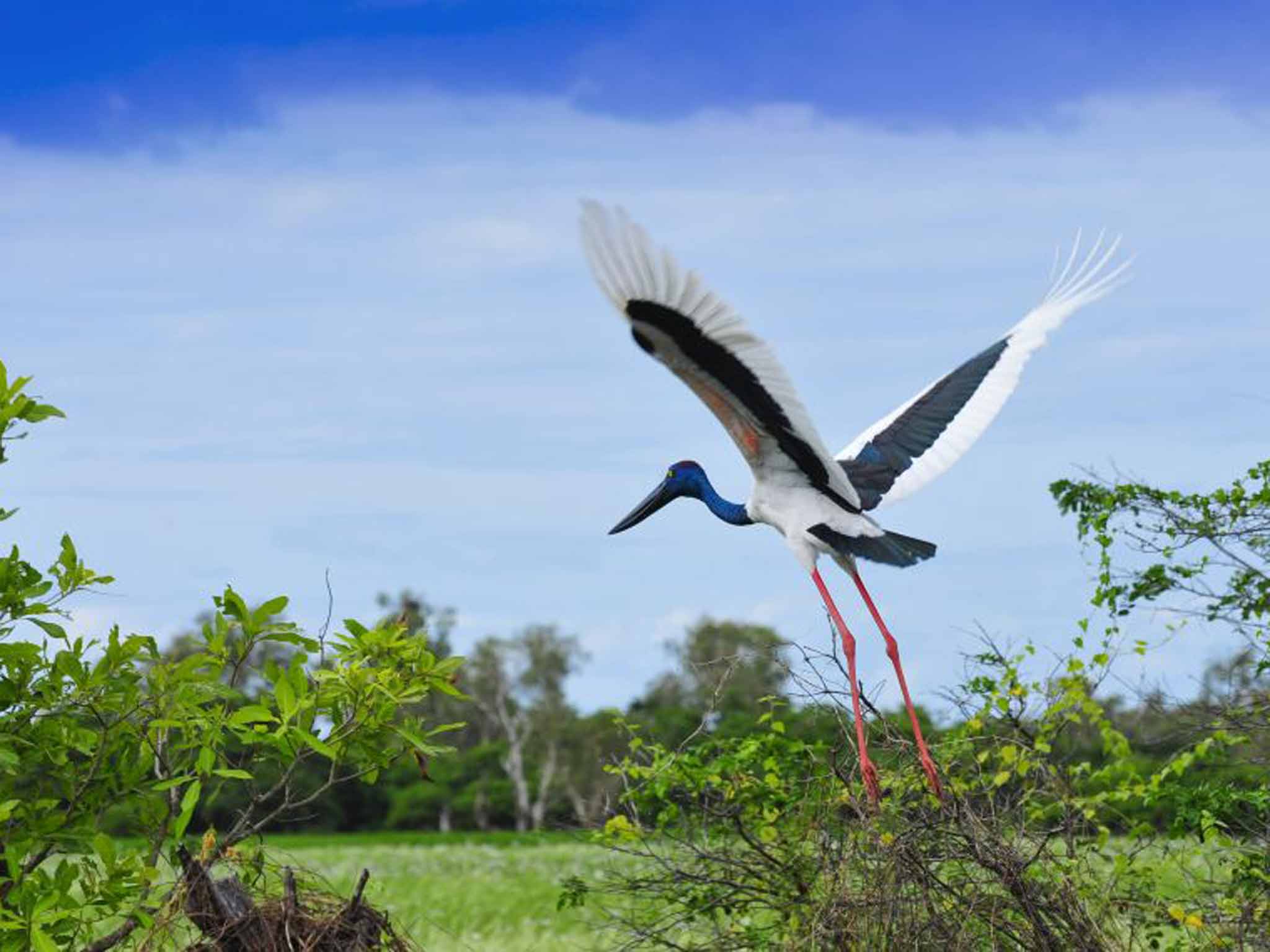
More than the unforgivingly spectacular landscape and the alien termite mounds and the enthralling Aborigine rock paintings, it was the Northern Territory's wildlife that blew me away. Not just the crocs, but the birds. I had only ever glimpsed a kingfisher once in my life, in the UK, and in the space of five minutes shortly after dawn on Yellow Water, I saw four of wildly different size and hue. Then there were the stilt-walking Jabiru birds, the theatrical darters, the egrets and vast, stately sea eagles … I could seriously become a birder here.
On our last day, we flew from Darwin by floatplane, landing on the water in Sweets Lagoon on the Finniss River System, and taxi-ing up to a pontoon on which were moored a helicopter and an airboat. Glenn, the baby-faced pilot, took us skimming over the trees in the chopper, but most exhilarating were two trips with Matt Wright, owner of Outback Floatplanes, on the airboat.
On the first trip, which Matt accurately warned us would be “fast and muddy”, we blasted through the choked waterways and empty lagoons, throwing up rainbows of spray and skimming over mangroves and fallen trees. On the second, slower meander, Matt lured a semi-tame egret on to the boat, tempted a kingfisher to flash down and snatch a fish from his palm, and thwacked his cap in the water to lure an enormous crocodile called Bone Cruncher alongside. Matt is swarthily handsome with pale green eyes, a former cattle musterer, firefighter and star of National Geographic's Outback Wrangler.
If anyone wants to remake Crocodile Dundee, and introduce the Northern Territory to a new generation, I know where they should start.
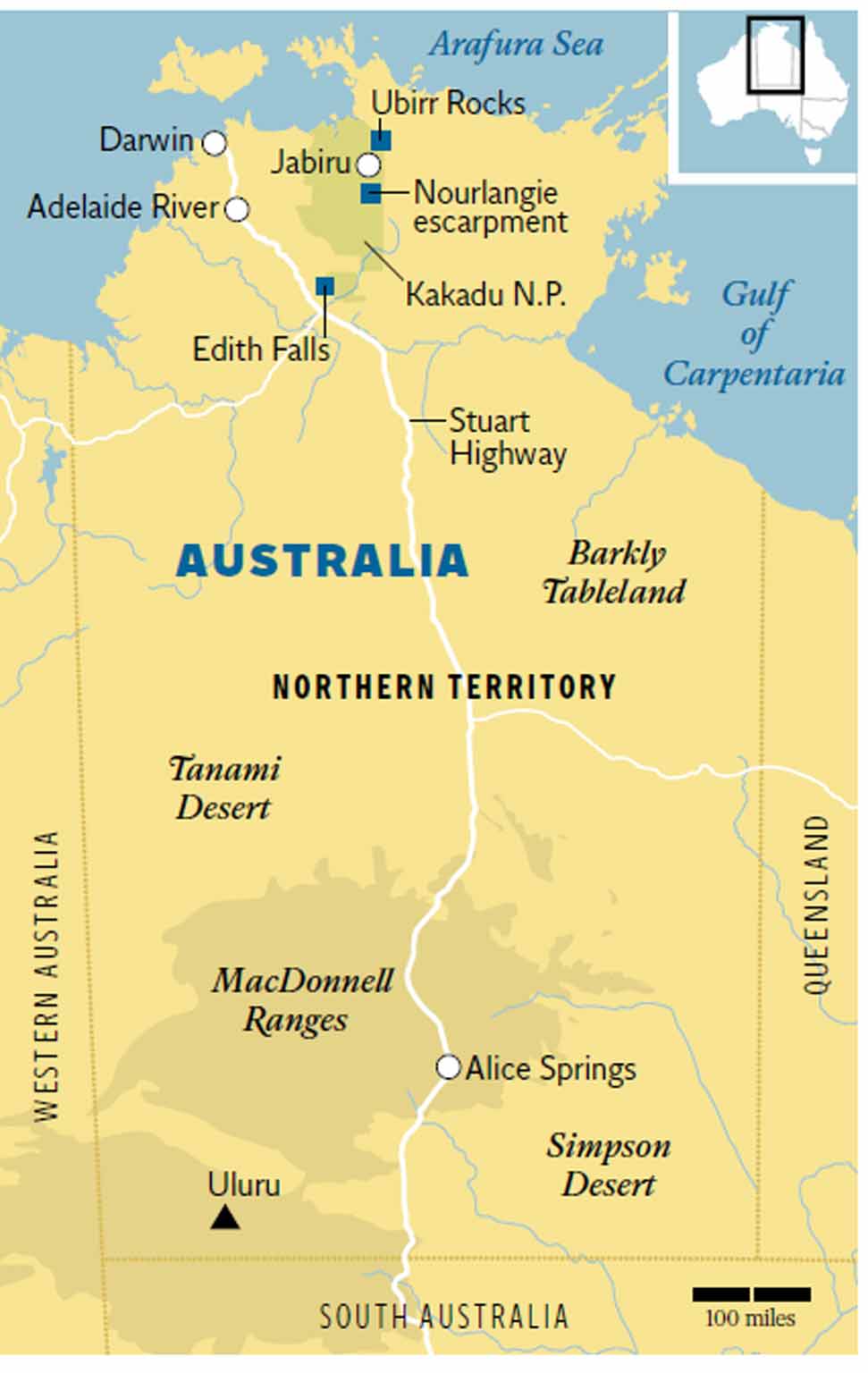
Getting there
Nick Curtis flew to Darwin via Singapore with Singapore Airlines (0844 800 2380; singaporeair.com) and its sister carrier SilkAir. Premium economy fares from Heathrow or Manchester start at £1,925.
Staying there
Anbinik Kakadu Resort (00 61 8 8979 3144; kakadu.net.au). Bungalows with shared bathrooms from A$125 (£62) room only.
Wildman Wilderness Lodge (00 61 8 8978 8955; wildmanwildernesslodge.com.au). Double cabins from $769 (£380), half board.
Cicada Lodge (00 61 8 8974 3100; cicadalodge.com.au). Twin rooms from A$695 (£347) B&B.
Visiting there
Outback Floatplanes (00 61 8 8981 4881; outbackfloatplanes.com.au) offers tours by float plane and helicopter.
More information
Join our commenting forum
Join thought-provoking conversations, follow other Independent readers and see their replies
Comments